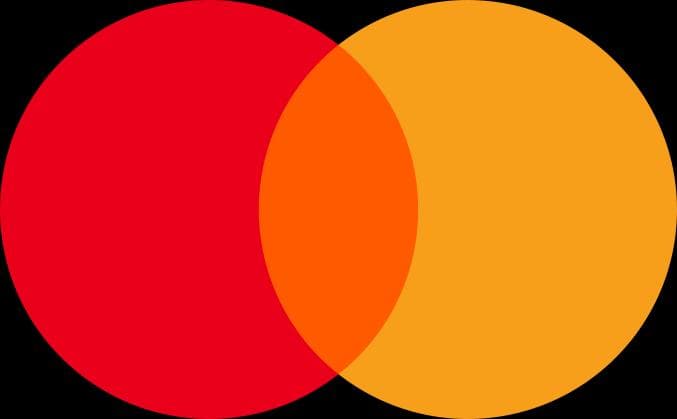
Switching Pixels – How Oyinloluwa Adedoyin Went From Photography to Design
Oyinloluwa Adedoyin's journey into design wasn’t planned. It started with an old computer, a curious mind, and a desktop game that would unexpectedly shape his future.
Introduction
Oyinloluwa Adedoyin's journey into design wasn’t planned. It started with an old computer, a curious mind, and a desktop game that would unexpectedly shape his future.
Fast forward to today, and Oyinloluwa has worked on major brands like VerifyMe, uLesson, Omnibiz, UBA and Crowdyvest, eventually landing his dream job at one of Nigeria’s leading tech firms. Now, he’s sharing his self-taught journey to show that anything is possible when you want it bad enough.

Oyinloluwa, you didn’t set out to become a designer, did you? How did this all begin?
No, I definitely didn’t. It all started with a game in junior secondary school. I enjoyed playing Mavis Beacon typing games, trying to type faster. One day, I found Microsoft Office on the computer, and I just kept clicking around the software. I attempted designing a lot of random things using Microsoft PowerPoint. I ended up designing an award for my school event after tweaking the design sample on PowerPoint. It was nothing serious, just for fun, but the teachers liked it so much they asked me to print it out. That was the first time I ever got paid for designing.
That’s a pretty cool story for your first paid gig! How did that moment shape your path forward?
The validation from my teachers really sparked something in me. It made me realise I had an eye for design. My parents were supportive, and I started practicing more design. What began as graphic design eventually led me to photography.
Interesting! What led you to photography?
Yes, photography was my next step. I began capturing conceptual pictures of Lagos, focusing on things like yellow buses and cityscapes. Somehow, my photos found their way featured on BBC and even into multiple exhibitions. It was actually crazy to see my work recognised internationally. But even with all this, design always felt like my interest.
So, design remained your true passion, but you started out studying something else, right?
Exactly. I went to university to study applied mathematics, which introduced me to coding. But honestly, it never clicked for me the way design did. I finished university, and by that time, I had built a solid design portfolio. That was when I saw a job post from uLesson looking for motion designers.
Did you apply?
Yeah, but they told me I couldn’t get the job because I had not completed my NYSC (National Youth Service Corps). But fate had a funny way of intervening. I got posted to Jos—the same city where uLesson was based. Through a chance meeting with Nihinlola Ayooluwa, (the company’s CEO), he looked at my portfolio and decided to give me a shot. Even though I had zero experience in motion design, he took a chance on me.
That sounds like a turning point. How did that experience help you grow as a designer?
It was life-changing. I wasn’t just animating; I was learning everything about product design, diving deep into tools like Figma and Adobe, and understanding how design integrates with product development. My time at uLesson was hands-on, and it helped me refine my craft. I honestly can’t tell my story without them.
After uLesson, how did you find your next opportunities?
From uLesson, I moved to Crowdyvest, a fintech startup where I had the opportunity to work in product and marketing as a multi-disciplinary designer. I worked across product designing, brand designing and motion designing. I saw my works get into the real world showcased as mobile apps, on the web, billboards and even airport banners. Then later came OmniBiz (now OmniRetail), a major Nigerian e-commerce platform. There, I merged my skills in design, marketing, and user research. Moving forward from here, another interesting chapter of my career was the Flutterwave Job Hunt event in February 2022.
What happened at the event?
They asked us to list five companies we’d love to work for. I wrote down UBA, Carbon, MTN, OPay, and Chipper Cash. Surprisingly, three of them reached out to me. But UBA was the most efficient in their response, so I decided to take the job with them.
That’s great. Have you gotten work in any other way?
Absolutely. Most of my opportunities didn’t come from sending out CVs. What worked for me was putting my work out there and being consistent. People saw that I was serious about design, and those connections turned into opportunities.
It’s clear that you’ve put in a lot of work. How have you invested in your growth as a designer?
I’ve spent a significant amount of money on learning. I once paid over $1,000 for a motion design course, even though I already had mentors. I earned a certification from the School of Motion, one of the most respected in the field. The learning never stops for me—that’s one of my favourite aspects of design. There’s always something new to discover.
You’ve been flexible in your career—if you had stayed with photography, would you have been satisfied?
I would have been happy, but I’m glad I stayed open-minded. If you had told me years ago that I wouldn’t be a full-time photographer today, I’d have said you were crazy. But I’m grateful that I stayed adaptable. Design has always called me back.
What advice do you have for aspiring designers who are just starting out?
There are a few key things I always tell people:
- Master the Fundamentals – Learn the basics first. Whether it’s colour theory, typography, or layout, these principles are your foundation. They apply across all types of design.
- Gain Real-World Experience – Join teams, collaborate, and work on actual projects. It’s about learning through doing.
- Be Visible – Put your work out there. Even if it’s not perfect, post it. People will see your growth, and opportunities will come your way.
- Stay Curious – Always ask questions. Download apps, analyse how they work, and ask yourself how you would improve them. Curiosity is a big part of becoming a great designer.
So, it’s all about consistency and curiosity?
Exactly. When you combine those with a passion for learning, you’ll become the designer you’re meant to be.
Share this article
Related Articles

Top 10 IT Skills in Demand for 2025 & Beyond
Retain your relevance in tech with these IT skills.
Joseph Chisom
4 months ago

The Role of Community in Building Sustainable Businesses
Building a business that lasts demands a connection with people—the customers, employees, partners, and stakeholders who form the backbone of its success.
Folajomi Adegbulugbe
3 months ago

Lagos Tech Fest 2025 returns with Mastercard as the headline sponsor
Eventhive, a global B2B event servicing company, has announced the return of its premier tech event.
Ugochukwu Paul
3 months ago
